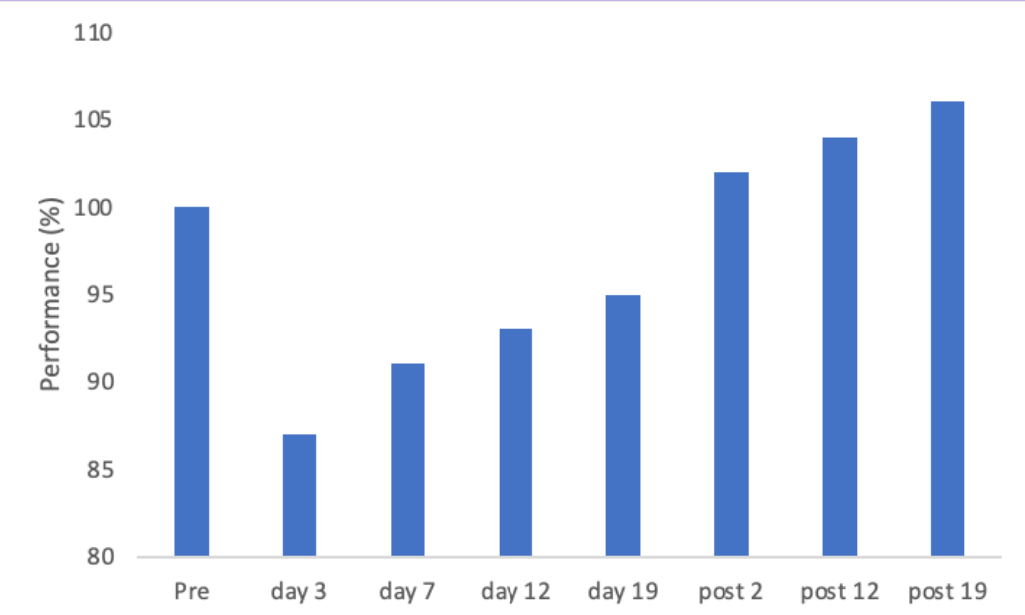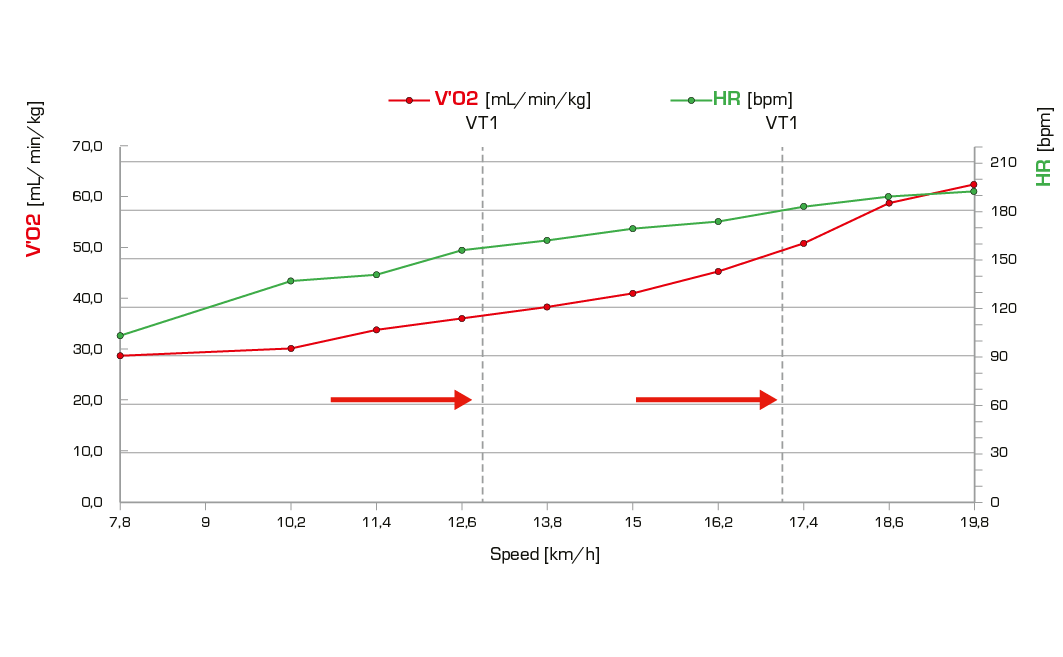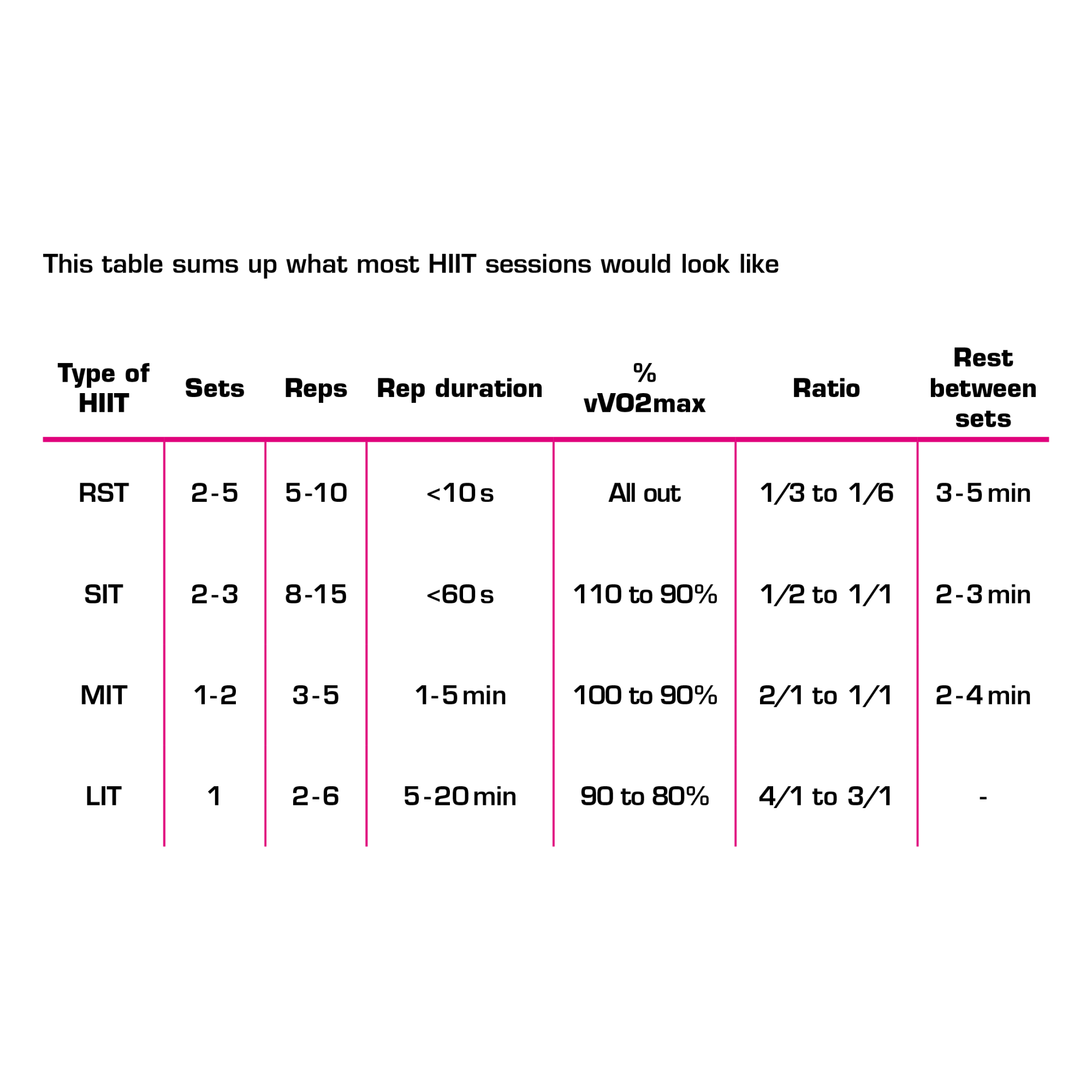What are the benefits of integrating HIIT into you training?
HIGH INTENSITY INTERVAL TRAINING (HIIT)
It is almost impossible to be training for endurance sports without ever having heard of interval training. Athletes from various sports have been doing such exercises for decades and it has been scientifically well established that hiit enhances endurance performance.
WHAT EXACTLY ARE WE TALKING ABOUT?
As its name suggests, hiit training is about alternating high intensity exercises for a given duration and low intensity recovery periods. The principle is that, when doing such workouts, one will be able to spend more time at the targeted intensity when compared to continuous training (CT). For instance, if you’re asked to run at VO2max pace (vVO2max), you might be able to hold this pace for around 5min. Total time spent at vVO2max = 5min. However, when performing a hiit session, you could go for 8-10 times 1min at vVO2max with 1min recovery between repetitions. Total time spent at vVO2max = 8-10min so around twice as long.
Another great advantage of such workout is that is it not much time consuming. If you’re short on time, warming up for around 10', doing the aforementioned session and doing a 10' cool down would only take around 40min and will lead to great results.

HOW OFTEN SHOULD I DO INTERVAL TRAINING ?
Remember the first article where we explained the principle of polarized training. If you haven't read it yet, please check on it for a full description. As a reminder, the principle is quite simple. 80% of the training is done below VT1, and 20% is done above VT2. We will introduce a slight modification to this rule. We will refer to it as the 80-5-15 principle, because in reality, 5% of the workouts are done between VT1 and VT2, either for races or for training at target paces. The reason for only 5% at the threshold? It's a zone that brings too much pain for not enough gain!
With all that, how often should I do interval training? If you're an amateur athlete training 3 to 6 times a week, one session of HIIT is perfectly sufficient! During certain training periods, two intensity sessions can be beneficial. However, overall, prioritize quality over quantity for optimal gains!
USEFUL FOR "ULTRA" ENDURANCE? PdG IS USUALLY MORE THAN 10H LONG...
We still hear too often comments like: "No need for high-intensity training because the effort is too long", "For ultra, the only rule is to focus on endurance” or “Working on my VMA when I'm going to walk for 100km? It's absurd!”
In reality, it's not that absurd! While it's essential to build volume at low intensity to prepare for races lasting several hours, contrary to preconceived ideas, working at very high intensities will actually improve your endurance too. VT1 and VT2 will thus be shifted to the right (see figure X). Certainly, interval training helps enhance both maximum cardio-pulmonary capacity and endurance. By training smartly, you'll be able to complete your races at an equivalent heart rate but at faster speed.

To learn more about high intensity interval training:
- Buchheit, M., & Laursen, P. B. (2013). High-intensity interval training, solutions to the programming puzzle: Part I: cardiopulmonary emphasis. Sports medicine, 43(5), 313-338.
- Dupont, G., Millet, G. P., Guinhouya, C., & Berthoin, S. (2005). Relationship between oxygen uptake kinetics and performance in repeated running sprints. European journal of applied physiology, 95(1), 27-34.
- Helgerud, J., Høydal, K., Wang, E., Karlsen, T., Berg, P., Bjerkaas, M., & Hoff, J. (2007). Aerobic high-intensity intervals improve V˙ O2max more than moderate training. Medicine & science in sports & exercise, 39(4), 665-671.
- Seiler, S., & Tønnessen, E. (2009). Intervals, thresholds, and long slow distance: the role of intensity and duration in endurance training. Sportscience, 13.
- Vaz, M. S., Picanco, L. M., & Del Vecchio, F. B. (2014). Effects of different training amplitudes on heart rate and heart rate variability in young rowers. The Journal of Strength & Conditioning Research, 28(10), 2967-2972.

